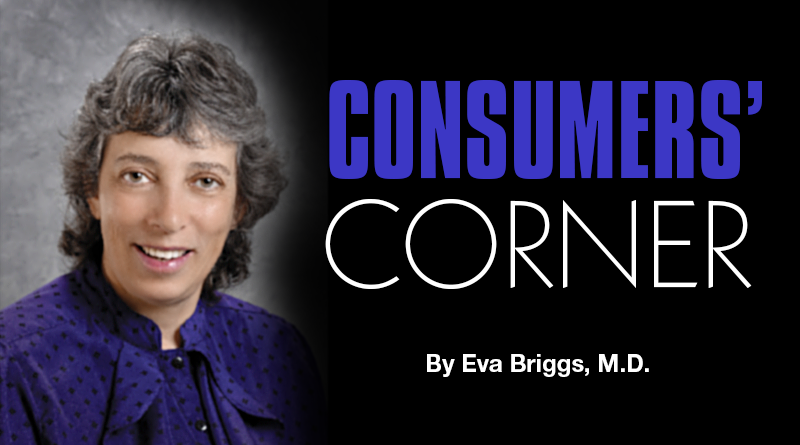8 Tips to Reduce Risk of Polypharmacy
Older patients more likely to take multiple drugs, which can pose some risks
By Eva Briggs, M.D.
 There’s a word doctors use when talking about a patient who’s taking multiple medications: polypharmacy.
There’s a word doctors use when talking about a patient who’s taking multiple medications: polypharmacy.
Sometimes there is a reason for a patient to take many drugs: several coexisting medical problems or a single condition that requires several medicines to control. But oftentimes there are simply too many medicines with the dangers implied: drug interactions, side effects, excess costs, overdose when a patient takes two or more similar medicines.
The older the patient, the greater the risk of polypharmacy.
Even though people over 65 make up about 13% of the population, they account for roughly 30% of all prescriptions.
How does polypharmacy happen? There are several ways. First, patients often take over-the-counter medicines or herbal supplements. Just because something is available without a prescription, that doesn’t mean that it’s OK to take as much as desired, as often as desired, or without regard to other medications.
The most common categories of over-the-counter medicines are pain relievers and cough/cold preparations. Manufacturers are limited to a few active ingredients for pain relievers: acetaminophen, aspirin, ibuprofen, naproxen or ketoprofen. And the last three all fall into the class of non-steroidal anti-inflammatories (NSAIDs), which have similar side effects and risks and should not be used together.
‘With so few basic ingredients available, why does the average pharmacy’s shelves hold dozens — or perhaps hundreds — of remedies for cough, cold, congestion, fever, aches and pains?’
There are similarly only a limited number of available active ingredients from which a manufacturer can concoct a potion to treat colds and flu: decongestants (pseudoephedrine and phenylephrine), antihistamines (diphenhydramine, loratidine and cetirizine), expectorants (guaifenisen), or cough suppressants (dextromethorphan.)
So, with so few basic ingredients available, why does the average pharmacy’s shelves hold dozens — or perhaps hundreds — of remedies for cough, cold, congestion, fever, aches and pains? In one word: marketing.
Each manufacturer combines various ingredients and comes up with a catchy name and catchier advertising. In order to understand what he or she is really taking, a consumer has to read the fine print, and to understand which ingredients might interact with other over-the-counter or prescription medicines.
At least with over-the-counter medicines, the dosages and ingredients are standardized. But items marketed as “supplements” are subject to much less stringent standardization of active ingredients and dosage reliability. “Supplements,” even when touted as “natural,” carry the potential of adverse reactions or interactions with other medicines.
Another easy way for patients to fall into the polypharmacy trap is to visit multiple doctors who each prescribe medication to treat their area of specialization, while unaware of medications prescribed by other physicians. This can happen also during a visit to an emergency room or urgent care.
After a hospital admission, a patient may be discharged with new or different medications. If he continues these medicines plus medications taken before hospitalization, he may wind up with drugs that interact or that have duplicate effects.
If you suspect that you or a loved one are taking too many drugs, start by gathering all medicines. Everything: prescriptions, over-the-counters, supplements, eye drops, skin creams, etc. Then bring them to your doctor and review each medicine.
Discuss the following questions with your doctor.
1. Is this medicine necessary? Over time, the underlying condition for which the drug was prescribed may change. Or the patient may have modified his lifestyle so that the medicine is no longer needed. And sometimes new information changes the way medicines are used; what was considered state-of-the art 10 years ago may be outdated today.
2. Is this drug contraindicated in the elderly? As people age, it may be necessary to alter their medication regimen to ensure that the risks do not outweigh the benefits.
3. Are there duplicate medications? For example, a patient taking a prescription NSAID may not realize that it can’t safely be combined with an over-the-counter medicine in the same class. Similarly, one specialist might prescribe a beta-blocker medicine to prevent migraines while another doctor might prescribe a beta-blocker to treat blood pressure, placing a patient at increased risk for side effects.
4. Is the patient taking the lowest effective dose? As people age, the organs that clear various drugs, such as the liver and kidneys, age too. The dose prescribed a decade earlier might need to be reduced to reflect the altered metabolism.
5. Is the medication being taken to counteract the side effects of another medicine? This is surprisingly common. Perhaps the first medicine can be changed, reduced, or eliminated, thus eliminating the need for a medicine to treat its side effects.
6. Can the regimen be simplified? Sometimes a single combination medicine can replace two individual drugs. Or a medicine that requires multiple daily doses can be changed to a once daily alternative.
7. Are there potential drug interactions? That’s one reason why it’s vital to bring all medicines, even non-prescription substances, to the office visit. Whenever possible, patients should try to obtain all their medicines from a single pharmacy. Often the pharmacist will be the first to recognize a potential drug interaction.
8. Is the patient actually taking the medicine? Just because a medicine is sitting in the medicine cabinet, it doesn’t mean that the patient is actually taking it. If not, it’s important to find out why in order to address the problem. Is it the cost? Are there side effects? Is the dosing too complicated? If these issues can’t be resolved, it makes no sense for the patient to have the medicine hanging around at home. Otherwise, years later, the patient may discover the medicine, restart it, and experience a problem.
Take a look around your house today. This would be a good time to take an inventory of what medications you have. Dispose of any that are no longer needed or that are outdated. Make a list that you can carry in your wallet. Learn the purpose of each medicine. And if you think that you still have too many medicines, bring them in to your doctor for a medication review.
Eva Briggs is a medical doctor who works at two urgent care centers (Central Square and Fulton) operated by Oswego Health.

